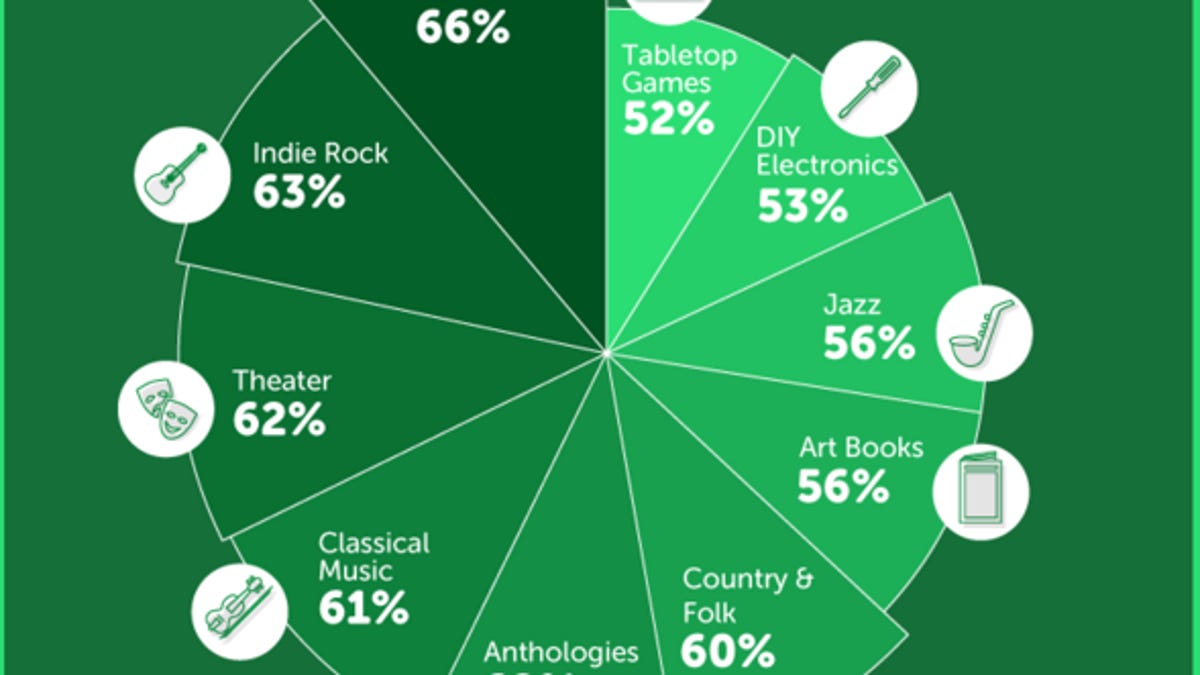What makes a Kickstarter campaign kick?
With crowdfunding becoming a more viable option for people to finance their passion projects, an in-depth look at raw numbers lays out the path to success.
Kickstarter has helped turn crowdfunding into a legitimate and viable financing option for many budding entrepreneurs, having raised over $2.1 billion for more than 270,000 projects since launching in 2009.
Marketing firm Today's Coaching has analysed 205,000 Kickstarter projects over the last six years -- 77,000 successful, 128,000 unsuccessful -- and has used the data to compile a report on why projects succeed or fail.
Crowdfunding platforms such as Kickstarter and Indiegogo enable startups tpitch products, including games, movies, music, gadgets and even restaurants, to prospective customers in the public. Would-be consumers then pledge money, sometimes in exchange for gifts or the final product itself. Investors are usually only charged if a project receives enough pledges to reach its funding goal.
This has led to both spectacular successes, such as the original Pebble Watch, and incredible failures like the Smarty Ring, which raised just under $300,000 but didn't even begin to live up to its promise. According to Kickstarter, 36.6 percent of the projects pitched on its platform get fully funded, and Today's Coaching's report yields some insights as to what separates the successes and failures.
It's not the first research into what contributes to Kickstarter success. In 2014, researchers from the Georgia Institute of Technology found the most important keywords on the site. Perhaps unsurprisingly for an Internet-based funding system, "cats" was a very successful term.
Picking the right categories
Dance and indie rock music pitches find great success on Kickstarter, according to the new report, with 66 and 63 percent of projects in those respective categories going on to become fully funded. The dance field has seen the likes of Infinity Dance Arts raise 300 percent of its goal amount in order to build a new studio, and rock bands such as Murder by Death score enough to make a new album and then some.
Today's Coaching recommends that startups and entrepreneurs pitch their idea under the most relevant category, but to also remember to include subcategories, which optimise the amount of attention a product can receive. Tweaking a project to incorporate elements of more popular categories may be a viable strategy.
Social media is a startup's best friend
Social media shares can be the difference between Kickstarter success and failure. The firm found that funded projects received 250 percent more shares than unfunded ones, with most of the activity occurring on Facebook. Dance, photography, art, food and fashion projects all did particularly well on Facebook, while comics, theatre and craft projects found followers on Twitter.
A key to shareability, the report says, is a well-produced video, such as the one game console Ouya used to help raise over $8.5 million, or a simple and stylish infographic.
Only 7 percent of apps succeed on Kickstarter
Not every campaign is a winner.
Technology is the most shareable category, with successful tech projects being shared an average of just under 2,500 times. Not all areas of tech are Kickstarter-friendly, however.
Apps aren't so hot on the platform due to the market being so competitive -- there are often free apps already available that do precisely what many pitched apps aim to. Similarly, websites were the second least successful product type, with only 8 percent of projects becoming properly funded. Food was next, with food trucks and restaurants coming in with 11 percent and 15 percent success rates respectively.
Look for new opportunities in other markets
The US is the most lucrative Kickstarter market, with its residents having donated over $1.2 billion and with projects originating from the country having the highest success rate at 39 percent. Today's Coach notes that, with the service being most widely used in the States, there's tremendous growth opportunity in countries abroad.
Behind America was the UK, which had drummed up £45 million ($68 million) in donations and enjoyed a success rate of 30 percent. Australian projects, meanwhile, had a much lower success rate of 19 percent -- 6 percent above the Netherlands' 13 percent, the lowest in the world.


